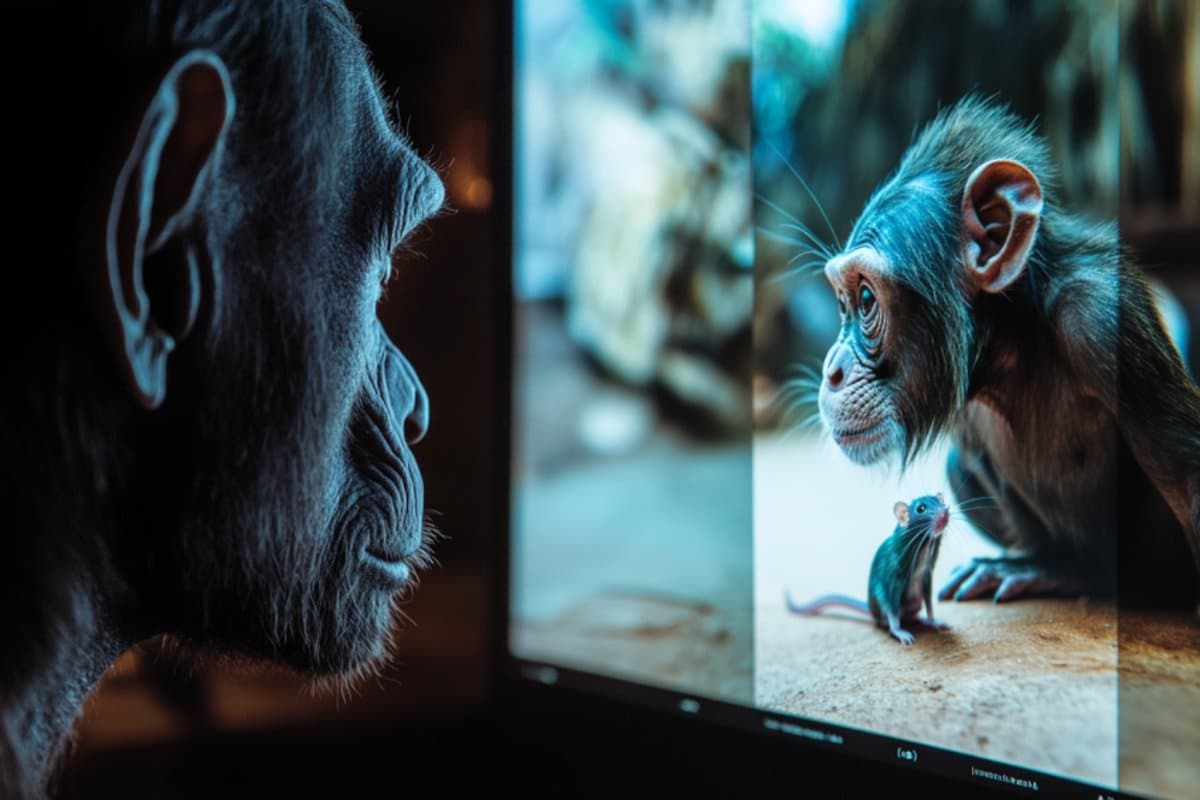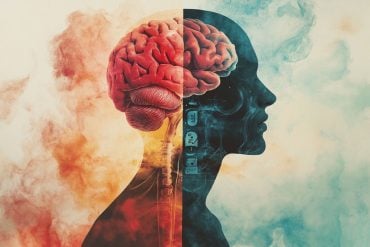Summary: Great apes track events involving agents and patients, like humans, suggesting shared cognitive mechanisms. When watching video clips, apes alternated their gaze between agents (e.g., a cat) and patients (e.g., a mouse), similar to adult humans, though apes paid more attention to background details.
Human infants, in contrast, focused mostly on the background, indicating that event tracking develops later. These findings suggest that the cognitive ability to track agent-patient relationships evolved before language, providing insights into how humans developed this key aspect of communication.
Key Facts:
- Great apes and adult humans focus on agents and patients, ignoring backgrounds.
- Apes share event-tracking abilities with humans, but infants lack this early on.
- Event role tracking likely evolved before human language as a shared mechanism.
Source: PLOS
Great apes track events with their eyes in the same way that humans do, according to a study published November 26th in the open-access journal PLOS Biology by Vanessa Wilson from the University of Neuchatel, Switzerland, and colleagues.
When watching a cat chase a mouse, humans will alternate looking at cat and mouse, using the information to connect the two into what’s called an agent-patient relationship—with the cat as the agent and the mouse as the patient.

This cognitive mechanism is thought to be one of the bases for the evolution of human language, forming both how people think about events and structure speech.
To find out if great apes can identify agent-patient relationships, the authors of this study showed 84 short video clips to 14 humans and examined their visual responses.
They compared human responses to the visual responses of five chimpanzees, two gorillas, and two orangutans at the Basel Zoo. They also performed the test with 29 six-month-old infants.
The authors found that both apes and adult humans paid the most attention to the agents and the patients compared with background information. They often alternated attention between the two, focusing more on the agent when video clips involved food.
Humans tended to focus entirely on the agents and patients, while apes showed more attention to the background. But while apes tended to track events like human adults, six-month-old human babies did not, instead paying attention mostly to the background.
The findings suggest that the way brains order events evolved before language, and that the way people break down events into agents and patients is not unique to humans, but instead is part of a cognitive spectrum between humans and other great apes.
Future studies will be needed to understand why great apes do not communicate like humans, and to better understand how humans developed language.
The authors add, “Gaze patterns from eye tracking data suggest that apes, like human adults, can decompose causal actions into agent and patient roles, something that is crucial for language.
“Our findings are consistent with a shared cognitive mechanism between humans and apes, suggesting that event role tracking evolved long before language.”
About this evolutionary neuroscience research news
Author: Claire Turner
Source: PLOS
Contact: Claire Turner – PLOS
Image: The image is credited to Neuroscience News
Original Research: Open access.
“Humans and great apes visually track event roles in similar ways” by Vanessa Wilson et al. PLOS Biology
Abstract
Humans and great apes visually track event roles in similar ways
Human language relies on a rich cognitive machinery, partially shared with other animals. One key mechanism, however, decomposing events into causally linked agent–patient roles, has remained elusive with no known animal equivalent.
In humans, agent–patient relations in event cognition drive how languages are processed neurally and expressions structured syntactically.
We compared visual event tracking between humans and great apes, using stimuli that would elicit causal processing in humans.
After accounting for attention to background information, we found similar gaze patterns to agent–patient relations in all species, mostly alternating attention to agents and patients, presumably in order to learn the nature of the event, and occasionally privileging agents under specific conditions.
Six-month-old infants, in contrast, did not follow agent–patient relations and attended mostly to background information.
These findings raise the possibility that event role tracking, a cognitive foundation of syntax, has evolved long before language but requires time and experience to become ontogenetically available.






